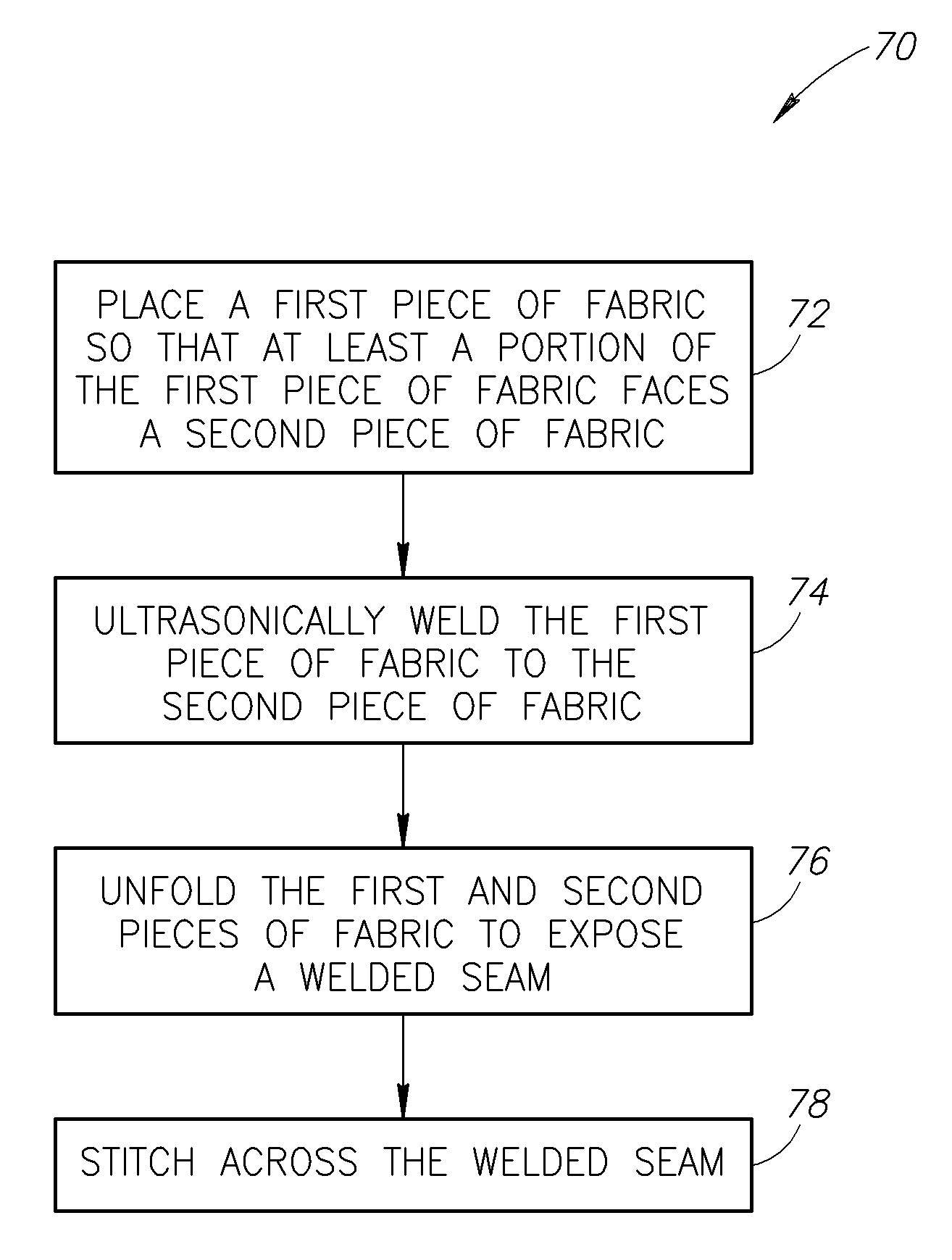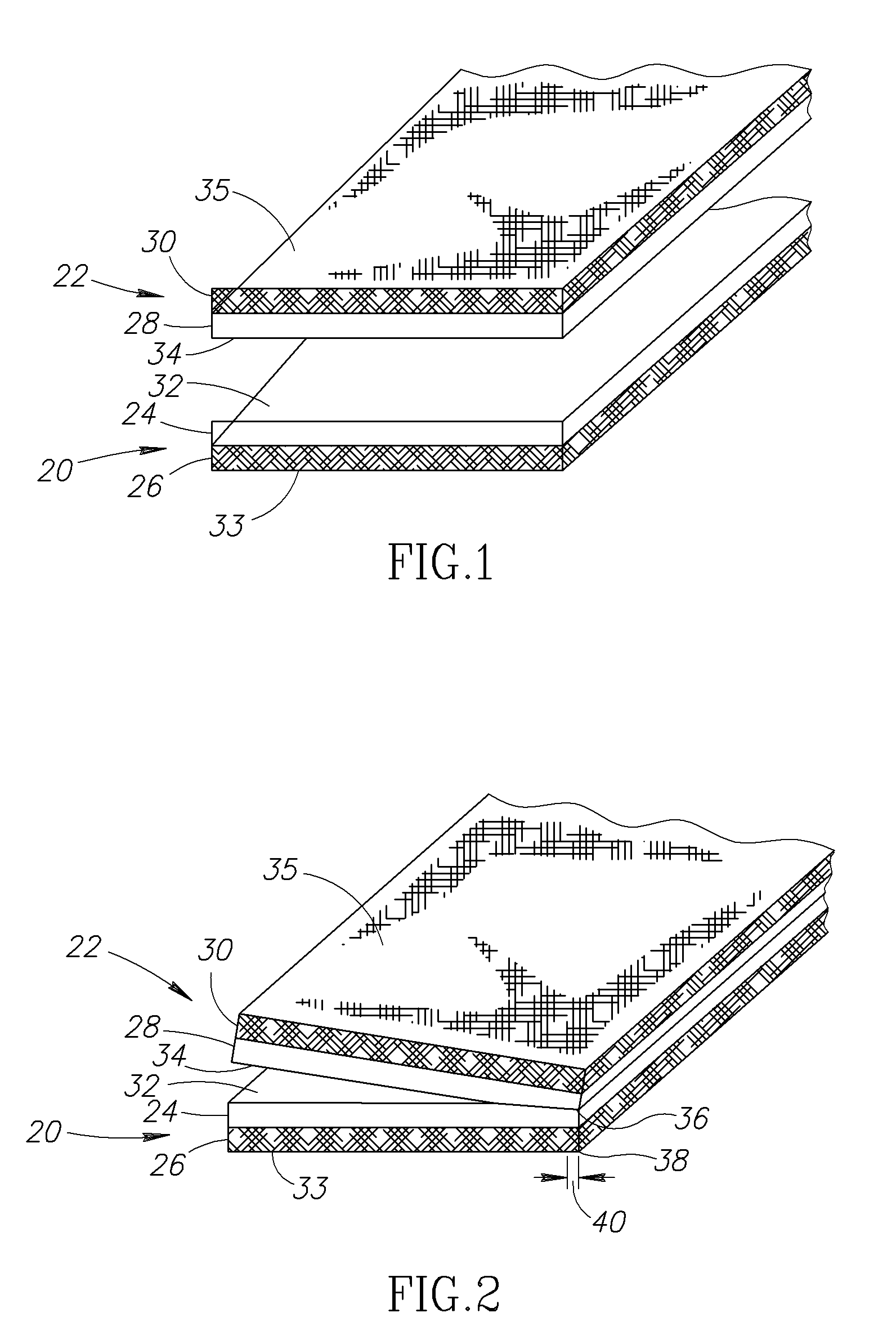Fabric joining method and system
a technology of fabric and seaming method, applied in the field of fabric seaming method and system, can solve the problems of not normally waterproof to the degree of hard shell garment, reducing the weight of the garment by even a small amount, and being difficult to use in the garment industry
- Summary
- Abstract
- Description
- Claims
- Application Information
AI Technical Summary
Benefits of technology
Problems solved by technology
Method used
Image
Examples
Embodiment Construction
[0035]FIG. 1 shows a representation of a first piece of fabric 20 and a second piece of fabric 22 before they have been joined. The first piece of fabric 20 includes a first layer 24 and a second layer 26. The second piece of fabric 22 also includes a first layer 28 and a second layer 30. In an example embodiment, the first layers 24, 28 are outer shell layers and the second layers 26, 30 are inner fleece layers laminated to the first layers 24, 28 respectively. The first piece of fabric 20 includes a first face 32 on the first layer 24 and a second face 33 on the second layer 26. The second piece of fabric 22 includes a first face 34 on the first layer 28 and a second face 35 on the second layer 30. Before joining the two pieces of fabric 20, 22, the first piece of fabric 20 is placed facing the second piece of fabric 22. In the example shown, it is desired to weld the first face 32 of the first piece of fabric 20 to the first face 34 of the second piece of fabric 22 along a seam. ...
PUM
| Property | Measurement | Unit |
|---|---|---|
| width | aaaaa | aaaaa |
| width | aaaaa | aaaaa |
| distance | aaaaa | aaaaa |
Abstract
Description
Claims
Application Information
 Login to View More
Login to View More - R&D
- Intellectual Property
- Life Sciences
- Materials
- Tech Scout
- Unparalleled Data Quality
- Higher Quality Content
- 60% Fewer Hallucinations
Browse by: Latest US Patents, China's latest patents, Technical Efficacy Thesaurus, Application Domain, Technology Topic, Popular Technical Reports.
© 2025 PatSnap. All rights reserved.Legal|Privacy policy|Modern Slavery Act Transparency Statement|Sitemap|About US| Contact US: help@patsnap.com



